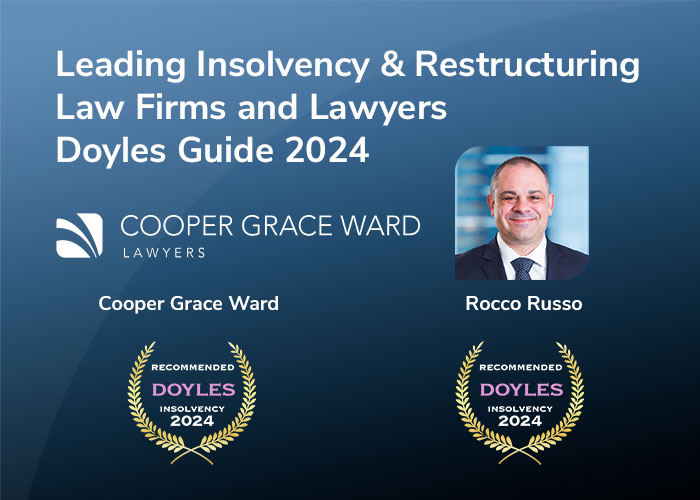The Environmental Protection Act 1994 (Qld) (EPA) imposes duties to prevent environmental harm. There are significant penalties for contravention. This is a concern for directors, employees, and secured creditors as well as receivers, voluntary administrators and liquidators appointed to a mining company.
In the recent Federal Court decision of CuDeco, the liquidators sought court directions to protect themselves from potential liability.
Brief overview of the legislation
The EPA is administered by the Department of Environment and Science (DES).
Under section 493(2) of the EPA, if a corporation commits an offence under the EPA, each executive officer of the corporation also commits an offence, namely, the offence of failing to ensure the corporation complies with the EPA.
‘Executive officer’ is defined in Schedule 4 of the EPA to mean a person who:
- is a member of the governing body of the corporation; or
- is concerned with, or takes part in, the corporation’s management,
whatever the person’s position is called and whether or not the person is a director of the corporation.
It has been confirmed by the Linc Energy decisions that environmental obligations of a company under the EPA can apply to liquidators.
Under the EPA, the DES can also issue an environmental protection order (EPO). A recipient of an EPO must not contravene such notice, wilfully or otherwise. It is an offence to do so.
In 2016, chain of responsibility provisions were included in the EPA, to enable an EPO to be issued to a ‘related person’ of a company. The term ‘related person’ is defined in section 363AB of the EPA.
CuDeco
In this case:
- there was a concurrent appointment of receivers and liquidators
- the receivers had the control of the mine site to the exclusion of the liquidators
- the liquidators were concerned they were exposed to liabilities under the EPA but had no control over the mine site, nor any involvement with the care and maintenance of the site.
To gain protection from potential liability under the EPA, CuDeco’s liquidators sought declarations that:
- the receivers were in control of the mining leases to the exclusion of the liquidators
- the liquidators were not an ‘executive officer’
- the liquidators were not a ‘related person’.
The receivers and the DES did not participate in the court proceedings.
Subject to some qualifications, the Court declared that the mining leases had been subject to the control of the receivers to the exclusion of the liquidators.
As to whether the liquidator was an ‘executive officer, CuDeco’s liquidators sought to distinguish the Linc Energy decisions, where there had only been a liquidator and no concurrent appointment of receivers.
The Court held that, even though there were concurrent appointments, CuDeco’s liquidators were ‘executive officers’ of the mining company.
Issue of relevant connection
However, where there is a concurrent appointment it does not automatically follow that simply because a liquidator may be classified as an ‘executive officer’ that they will also be liable for environmental offences under the EPA. Similarly, it does not automatically mean they are a ‘related person’. It depends on whether the liquidator has a relevant connection.
For example, section 493(4) of the EPA essentially provides that, although liquidators and receivers are executive officers as defined by Schedule 4, section 493(2) does not apply if the liquidator or receiver:
- took all reasonable steps to ensure the corporation complied with the relevant EPA provision; or
- was not in a position to influence the conduct of the corporation in relation to the relevant EPA provision.
Queensland’s enforcement guidelines (Enforcement Guidelines), provide useful examples and insight into how the DES is likely to administer and prosecute under the EPA.
The Enforcement Guidelines provide, for example:
- ordinarily action will be taken against the company for offences by officers, agents, employees etc.
- action is only taken against an individual officer where there is evidence of their failure to comply with personal, statutory or employment obligations that has resulted in serious or material environmental harm. To demonstrate culpability, relevant factors include:
(a) negligent (whether wilful or not) actions or omissions
(b) illegal activities
(c) failure to take reasonable steps.
There are also guidelines dealing with the matters to be considered by the decision-maker at the DES when determining whether someone is a ‘related person’ (DES Guidelines).
In CuDeco, the Court said it was inappropriate for the Court to make a declaration that the liquidators were not a ‘related person’, because this was a matter for the decision-maker of the DES.
The Court said it was the task for the decision-maker to ensure they are ‘satisfied’ that a person has a relevant connection, having regard to the provisions of the EPA, including the DES Guidelines.
The Court observed that the DES Guidelines indicate that, where there are concurrent appointments, the decision-maker will be required to consider (at minimum) the relationship between receivers, liquidators and the company, the terms of the appointment of the receivers, the respective specific roles, powers and responsibilities of the receivers and the liquidators during the relevant time and any relevant evidence that the liquidators seek to produce to the DES.
Although it was not declared that the liquidators were not a ‘related person’, CuDeco’s liquidators could take comfort that the Court declared (subject to qualifications) that the mining leases had been subject to the control of the receivers to the exclusion of the liquidators.
Comments
Where receivers have been in full management and control of the mining lease to the exclusion of the liquidators, it is very difficult to see how the liquidators will be held personally liable for environmental liabilities under the EPA.
Notwithstanding, there are prudent steps a liquidator can take to guard against the risk of potential liability under the EPA and to manage the issue with the receivers.
It is clear that receivers need to be aware of the significant risks of being personally liable under the EPA and should consider these risks and seek protection when negotiating the terms of their appointment as receivers. Receivers also need to carefully manage communications with the DES.
For the secured creditor, environmental liabilities can significantly devalue their security. A secured creditor should assess these risks before lending and monitor the risks on an ongoing basis.
Obviously, there are also significant risks for directors, other office holders and employees who may still have liability under the chain of responsibility for their role in the management of the mine.
If you would like more information about these issues, please contact partners Leanne O’Neill or Graham Roberts.






